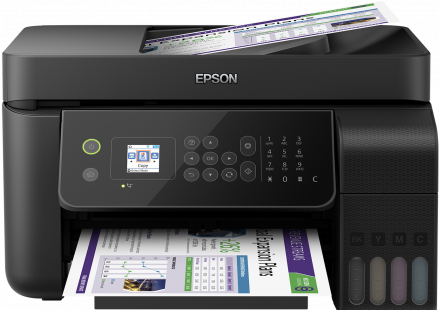Epson EcoTank printers (tech review).
We don’t normally do reviews of computer hardware. There’s enough of it out there for you to make your own decisions as to what you buy. My old printer was having a meltdown and it was getting passed nursing it. The problem with getting a replacement was finding that several generations had passed and my old model was definitely obsolete in, I think, the three or four years I’ve been using it.
Picking a replacement was either going for more of the same with cartridges or try the new system of ink tanks. Epson’s professes that this way their EcoTank printer black cartridge would last 700 pages and full colour, from three cartridges, would last 500 pages. Presumably, a combination of both would lie somewhere in between line. Even so, that’s a lot of pages.

Unless you print profusely, Epson reckons you should last up to two years before needing to buy ink bottles, the full original set costing around £35.00 (UK) unless you pay a little extra for the printer and get free top-ups, although the price is about the same. You can see how full the tanks are so have advanced warning about when to buy more ink. A lot of that depends on your budget.
The only real concern was what happened if the inkpad dried out and that part could be bought for about £18.00 (UK), but if the printer was used regularly I doubt if that was needed. The main problem with cartridges is that to conserve costly ink you don’t always print regularly to keep the inkpad moist. When you have this much ink, that’s one less worry.
For my budget, I bought an Amazon warehouse deal and the Epson printer arrived with the tanks already full but the inkpad dry. Using the maintenance control, it only took three head cleans to charge it up and everything was working fine and I could print from the computer although not full control access.
After getting it logged into Epson and software updates, I decided to download the computer updates manually, getting most of the controls back. It was on the fourth day that an e-message arrived saying it would do all this automatically. In that respect, all the controls came back from page size reduction to colour options and resembled what I could do with my old printer. Up until now, I’ve tended to rely on 5 colour photo printers but this one was equal to this.
So, why am I telling you this? When you do have to update your printer, it’s worthwhile considering this type of printer. We’re all aware that there’s a lot of plastic waste out there and a lot of it comes from printer cartridges. Although EcoTank printers cost a lot more that standard cartridge printers, work out how often you have to replace the manufacturer cartridges against that and this becomes a good option and you save plastic which makes a lot of sense.
In many respects, you do have to wonder why Epson has moved this way? After all, we all know printer manufacturers make their money from selling ink, surely Epson have got a potential loss-leader here.
However, if everyone switches to these printers and there are several models out there, then they will wipe out the competition until they do a similar version. With the freedom to use more ink, you might print more or you might not. Logistically, everyone wins, especially if you print a lot.
As I pointed out above, Epson do several EcoTank printers, so you can pick whichever version fits your budget without me professing which model I bought.
GF Willmetts
July 2019

